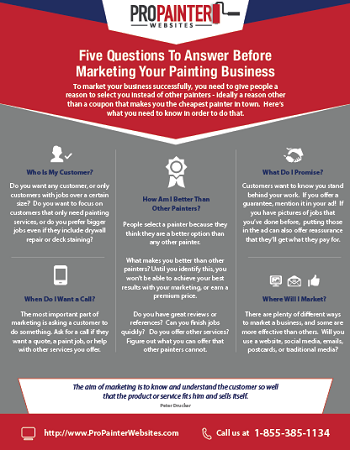Check Out The Function Of Seasonal Factors In The Success Of Business Outside Painting And Discover The Best Times To Secure Long Lasting Results For Your Project
Check Out The Function Of Seasonal Factors In The Success Of Business Outside Painting And Discover The Best Times To Secure Long Lasting Results For Your Project
Blog Article
Created By-Ford Skafte
When you're preparing an industrial outside painting project, seasonal elements can make or damage your outcomes. You'll want to think about just how temperature and humidity effect paint application and drying out times. Choosing the right period can guarantee your paint adheres effectively and lasts much longer. Yet which periods are truly the most effective for this kind of job? Let's explore the crucial elements that can influence your project's success.
The Impact of Temperature on Paint Application
When you're planning a commercial outside paint job, the temperature level can substantially impact exactly how well the paint adheres and dries.
Ideally, you intend to repaint when temperature levels vary between 50 ° F and 85 ° F. If it's as well chilly, the paint may not treat appropriately, causing problems like peeling off or cracking.
On the other hand, if it's as well hot, the paint can dry out as well quickly, preventing correct attachment and resulting in an uneven surface.
You must also think about the time of day; morning or late afternoon offers cooler temperatures, which can be extra favorable.
Constantly examine the maker's recommendations for the specific paint you're using, as they commonly provide support on the suitable temperature variety for ideal results.
Moisture and Its Impact on Drying Times
Temperature isn't the only ecological element that affects your commercial outside painting task; moisture plays a considerable function as well. High moisture levels can slow down drying out times substantially, affecting the overall top quality of your paint task.
When the air is filled with dampness, the paint takes longer to heal, which can cause issues like bad bond and a higher threat of mold development. If mn interior paint color expert on an especially humid day, be planned for prolonged wait times in between coats.
It's important to check neighborhood weather conditions and plan accordingly. Preferably, go for humidity levels in between 40% and 70% for optimal drying out.
Maintaining these factors in mind ensures your task stays on track and supplies a lasting coating.
Best Seasons for Commercial Exterior Paint Projects
What's the best season for your commercial external paint jobs?
luxury home painters and very early autumn are usually your best choices. During these periods, temperatures are light, and moisture levels are commonly lower, developing excellent conditions for paint application and drying.
Stay clear of summer's intense heat, which can create paint to completely dry also rapidly, leading to bad adhesion and finish. Likewise, winter's cold temperature levels can hinder correct drying out and healing, taking the chance of the durability of your paint work.
Go for days with temperatures between 50 ° F and 85 ° F for optimal results. Bear in mind to inspect the neighborhood weather prediction for rain, as damp problems can destroy your project.
Preparation around these elements guarantees your paint task runs efficiently and lasts much longer.
Conclusion
In conclusion, preparing your industrial external paint jobs around seasonal factors to consider can make a significant difference in the result. By scheduling work throughout the ideal temperature levels and humidity degrees, you'll make sure far better bond and drying out times. Bear in mind to keep an eye on neighborhood weather forecasts and choose the correct time of year-- springtime and very early autumn are your best choices. Taking these actions will assist you accomplish a sturdy and specialist finish that lasts.
